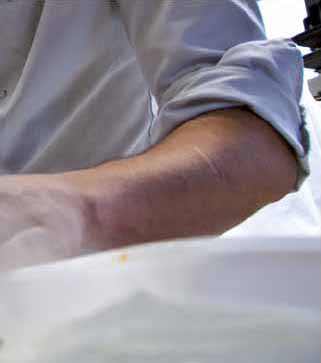

I recall something funny that happened to me at the restaurant regarding the fashionable topic of using dry ice or CO2 or, as it is also more elegantly called, carbonic snow. It was one of the first times we used this product in front of a customer. In a dessert called ‘Strawberry Bubbles’, a strawberry milkshake is poured onto a container holding the aforementioned dry ice and, instantly, bubbles – which seem to overflow without end and comes spurting up, resulting in a great spectacle. A few really surprised diners told me that all I needed was ‘a pointed hat’. Of course, they were referring to Harry Potter and his bubbling cauldron. Without doubt, the right impact had been achieved.
Elaborating on the theme, aside from this amusing anecdote, we must clarify some points about this new product, increasingly better known as dry ice rather than CO2 in solid state, because it goes directly from a solid state to a gaseous state, without passing through the liquid state (hence the word dry). The process is known – by the beautiful word – sublimation. It is called ice, not only because it is in a solid state, but also because it is cold, and so icy that it burns, at nothing less than minus 78 °C.


But this has long been in use in laboratories and hospitals, and it has an even more usual and everyday use in pubs and breweries, in particular, for cooling beer served from the tap or barrel.
In this case, the CO2 in liquid form has to be at very high pressure, and when coming out of the canister, therefore, supports a very strong decompression and passes into gaseous form; this causes a rapid cooling of the liquid, part of which does not evaporate completely into a solid CO2 state (for this you need to reach the temperature of about 8 °C ) To catch it, what is employed, in hospitality parlance, is called a pillbox (in the best sense of the word), which is simply a container where the dry ice that will be formed is collected and looks like a tablet.
Therefore, the explanation of the aforementioned bubbles is less magical than it appears. By immersing dry ice in liquid, it immediately passes into gas, and begins to bubble (CO2 is released, which is the same gas for soft drinks, beer or champagne). If, for example, we put it at the bottom of a bowl and add milk (in our case a lactic fruit shake) many, many bubbles are quickly released and stay trapped in the foam by milk proteins, which are known to be magnificent foaming agents. These bubbles explode, releasing hazy smoke, which is condensed water vapour. Magic has its tricks.